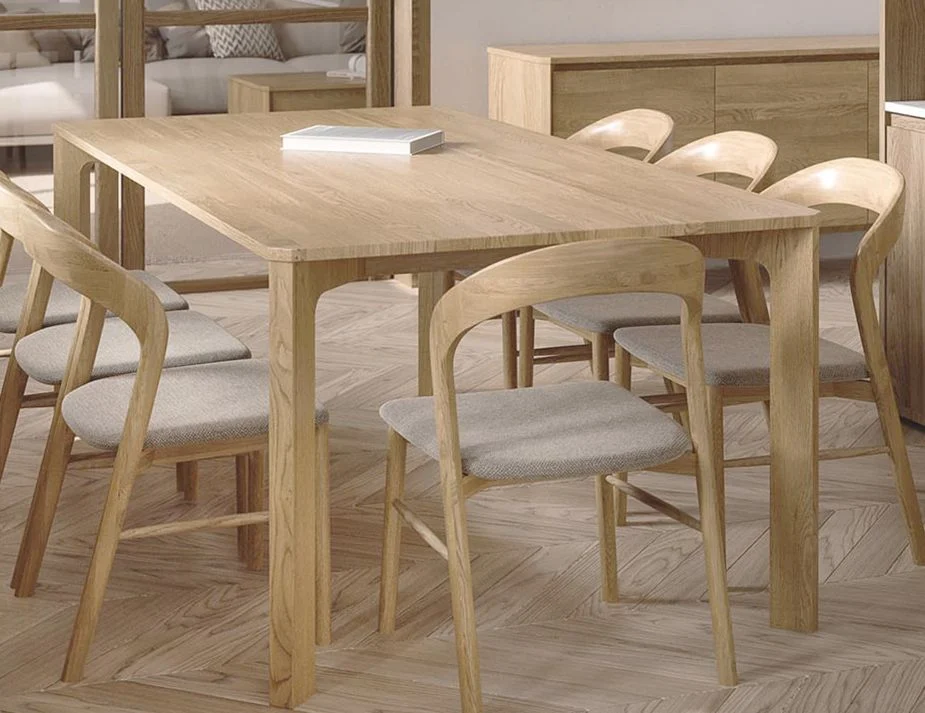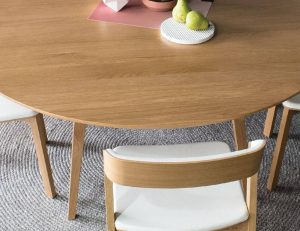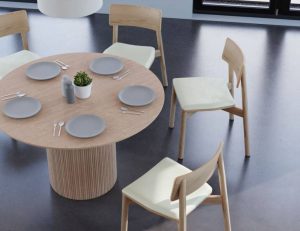
A Buyer’s Guide For Choosing The Right Dining Table
How To Choose The Right Dining Furniture
The dining room is more than just a place to eat; it’s a space where families come together to create lasting memories and strengthen their bonds.
To create a warm and cozy atmosphere for your loved ones, it’s crucial to choose the right dining table. But with so many options available, how do you know which one is right for you?
Don’t worry, we’ve got you covered. In this comprehensive guide, we’ll walk you through the process of selecting the perfect dining table, covering all the key factors to consider.
Material Matters
When it comes to durability, the choice of material plays a significant role. Hardwood tables, such as oak, maple, walnut, teak, and mahogany, have been known to last for generations. However, if you’re on a budget, you can opt for tables made of composite wood like plywood or fibreboard. Keep in mind that these options may not be as durable as hardwood tables. Other materials, such as glass, marble, and slate, offer easy cleaning options. For a unique touch, consider rattan, steel, or iron tables.
Shape and Size
The shape and size of your dining table should complement your dining room. For small areas, a round table with a pedestal base provides more legroom and accommodates more people. Rectangular tables are suitable for long and narrow rooms or large gatherings. Square tables work well in narrow dining areas or square spaces. Oval tables add elegance and come with removable leaves, allowing you to adjust the size based on the number of guests.
Space and Comfort
Ensure that there’s enough space for comfortable movement around the table. Leave at least 19.5 cm of space between the table and the walls for easy seating and getting up. Avoid overcrowding the table with too many chairs, as it can make the room feel cramped. Each person should have about 2 feet of space to be comfortable and avoid bumping into each other. Consider extendable tables for large gatherings during the festive season.
Style and Mood:
The dining table sets the tone for the entire room. Whether you prefer a rustic, traditional, or modern look, there’s a table to suit your style. Scandinavian dining tables, known for their minimalist and functional design, add a touch of elegance to any space. If you want to bring the indoors outside, consider outdoor dining tables for “al fresco” dining experiences. For formal dining rooms, opt for more ornate tables to create a sophisticated ambience.
The height of the dining table and chairs is crucial for a comfortable dining experience. Measure the height of the table before purchasing, ensuring that the chairs are no more than 7 cm from the floor level. Lower tables require specific seating to ensure comfort. Additionally, consider the width of the table to allow for proper place settings and serving dishes.
As the festivities draw near and loved ones gather in your home, an extendable dining table becomes a practical choice. It allows you to accommodate more guests and create memorable moments around the table.
Choosing the right dining room table is a crucial decision that can significantly impact your dining experience. Consider the material, shape, size, style, and comfort to create a space where you can nurture your dreams and create cherished memories with your loved ones. Whether you opt for a Scandinavian dining table, an outdoor dining table, or an extendable one, make sure it reflects your style and serves as a centrepiece for your dining room. Happy table hunting!
Frequently Asked Questions:
The material of the dining table is crucial for durability and maintenance. Hardwood tables like oak, maple, walnut, teak, and mahogany are long-lasting and can be passed down through generations. Composite woods such as plywood or fibreboard are budget-friendly but less durable. Other materials like glass, marble, and slate offer easy cleaning, while rattan, steel, or iron tables add a unique touch to your dining space.
The shape and size of the dining table should complement your dining room and accommodate your needs. Round tables with pedestal bases provide more legroom and are ideal for small areas. Rectangular tables suit long, narrow rooms or large gatherings. Square tables fit well in narrow dining areas or square spaces. Oval tables add elegance and can be adjusted with removable leaves for varying guest numbers.
Ensure enough space for comfortable movement around the table, leaving at least 19.5 cm between the table and walls for easy seating and getting up. Avoid overcrowding the table with too many chairs, providing about 2 feet of space per person to avoid bumping into each other. Consider extendable tables for large gatherings during festive seasons to accommodate more guests comfortably.
The dining table sets the tone for the entire room. Choose a style that reflects your taste, whether rustic, traditional, or modern. Scandinavian dining tables offer minimalist elegance, while ornate tables suit formal dining rooms for a sophisticated ambience. Outdoor dining tables can create a seamless “al fresco” dining experience, bringing indoor comfort outside.
Measure the height of the table before purchasing, ensuring chairs are no more than 7 cm from the floor level. Lower tables require specific seating for comfort. Additionally, consider the table’s width to allow proper place settings and serving dishes. The right height and comfortable seating are essential for an enjoyable dining experience, especially during extended gatherings.


